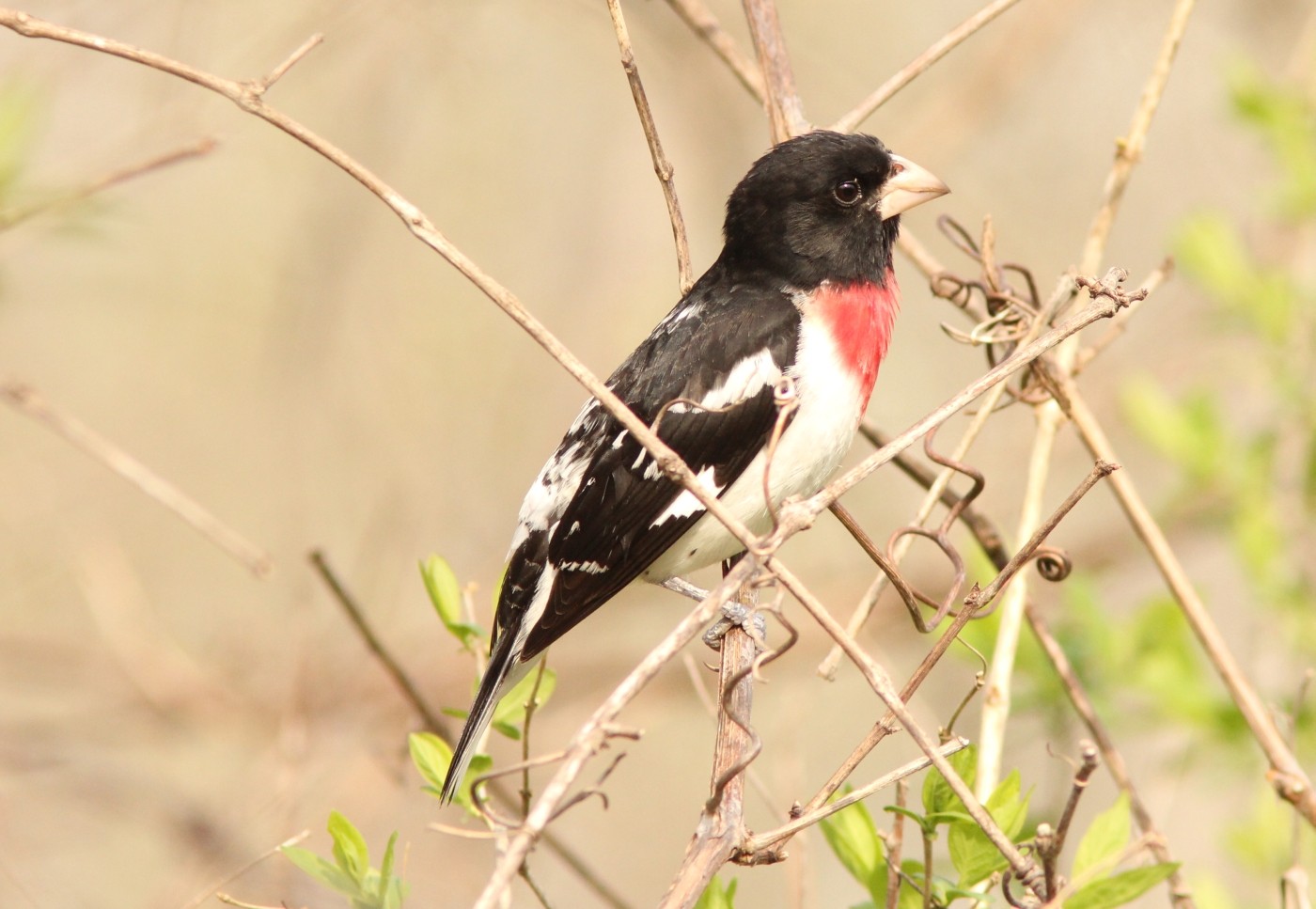Rose-breasted Grosbeak
A species of Typical New World Grosbeaks Scientific name : Pheucticus ludovicianus Genus : Typical New World Grosbeaks
Rose-breasted Grosbeak, A species of Typical New World Grosbeaks
Botanical name: Pheucticus ludovicianus
Genus: Typical New World Grosbeaks
 Photo By Caleb Putnam , used under CC-BY-SA-2.0 /Cropped and compressed from original
Photo By Caleb Putnam , used under CC-BY-SA-2.0 /Cropped and compressed from original Description
The rose-breasted Grosbeak is a medium-sized songbird with an important ecological role - it eats various insect species, helping farmers to keep destructive pests under control. Besides insects, it feeds on seeds and other plant materials. The adult male is known for its striking plumage patterned in black, white, and brilliant red. In some regions, this species interbreeds with the Black-headed grosbeak (P. melanocephalus).
Size
18 - 22 cm
Life Expectancy
24 years
Nest Placement
Tree
Clutch Size
1 - 5 eggs
Incubation Period
1 - 2 broods
Number of Broods
11 - 14 days
Nestling Period
9 - 12 days
Feeding Habits
Rose-breasted Grosbeak's diet varies seasonally, consuming insects, seeds, and fruits. In breeding season, they predominantly eat insects and native fruits, and during fall migration, they focus on berries. Winter diet is diverse, encompassing plant material and invertebrates, with also foraging in parks and gardens for fruits like Trophis racemosa. Gleaning and hawking behaviors are employed while feeding.
Habitat
Rose-breasted Grosbeak predominantly reside in open deciduous woods, particularly in northeastern regions of North America, suitable for breeding. During winter, they are found at varying altitudes, from sea level to highlands in Central and South America. Their preferred habitats encompass second-growth forests, mixed woodlands, and semiopen areas such as suburban gardens and parklands, often near water sources and clearings.
Nest Behavior
Both rose-breasted Grosbeak sexes construct the nest, investing 4-9 days. Egg-laying patterns involve joint suitability tests by settling and turning around in the potential nest location. Parental care involves shared responsibilities between the male and female.
Nest Characteristics
Rose-breasted Grosbeak's nest is a loose, open cup built in sapling forks, using sticks, twigs, grasses, weed stems, leaves, or straw, lined with finer materials. It's flimsy, often revealing egg outlines, measuring 3.5-9 inches wide and 1.5-5 inches tall.
Dite type
Insectivorous
People often ask
Migration Overview
The first birds leave the breeding grounds as early as August, while the last ones do not return until mid-late May. In general, however, they migrate south in late September or in October, and return in late April or early May. It appears as if they remain on their breeding grounds longer today than they did in the early 20th century, when migrants were more commonly seen in May and August than in April or September. 
General Info
Feeding Habits
Bird food type
Bird Feeder Type

Large Hopper

Platform
Behavior
Rose-breasted Grosbeak are territorial songbirds that engage in singing for territory establishment and mates attraction. Males temporarily ward off females before forming a monogamous pair bond. Intruding males are tolerated if silent, but otherwise faced with displays of intimidation or chased off. Breeding pairs are cooperative, sharing nesting duties equally. They aggressively defend their nests from predators like blue jays and grackles, and adults may fall prey to raptors. Outside of breeding season, rose-breasted Grosbeak can be solitary, or form pairs and loose flocks, at times mingling with different species.
Distribution Area
The rose-breasted grosbeak's breeding habitat is open deciduous woods across most of Canada and the northeastern United States. In particular, the northern birds migrate south through the United States east of the Rocky Mountains, to winter from central-southern Mexico through Central America and the Caribbean to Peru and Venezuela. 